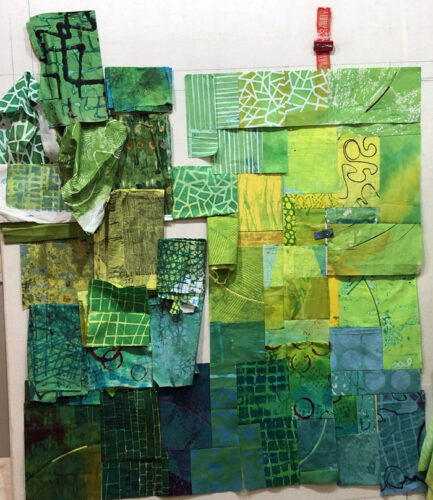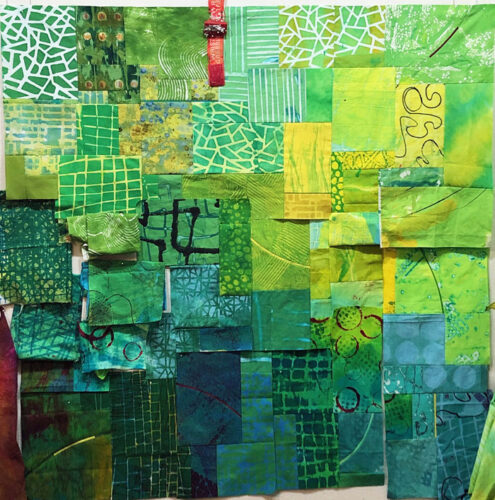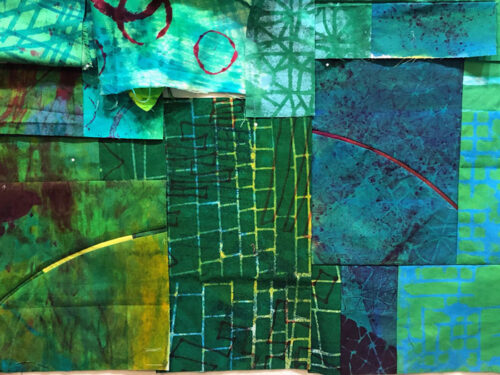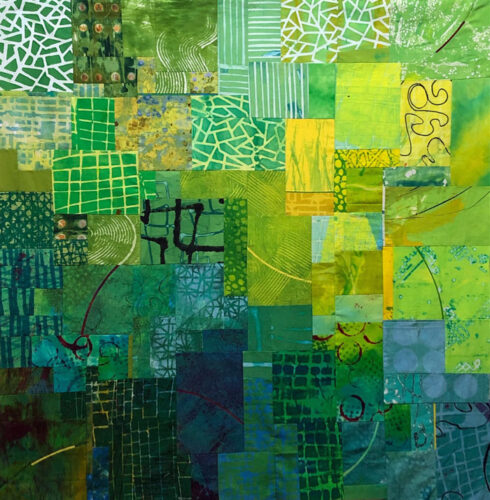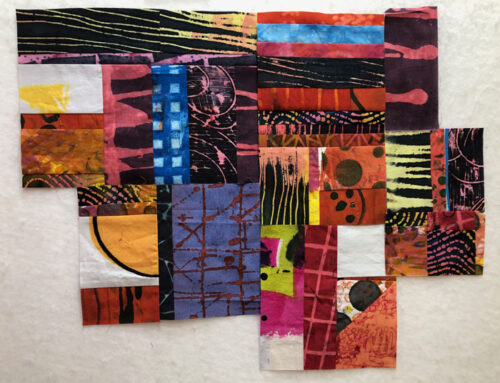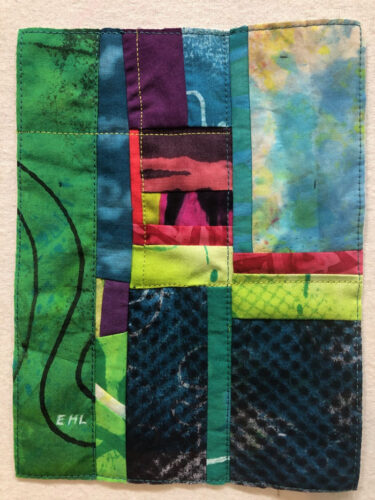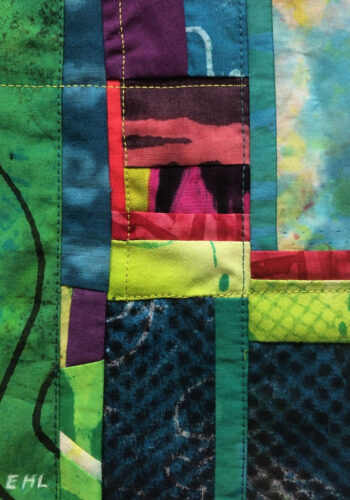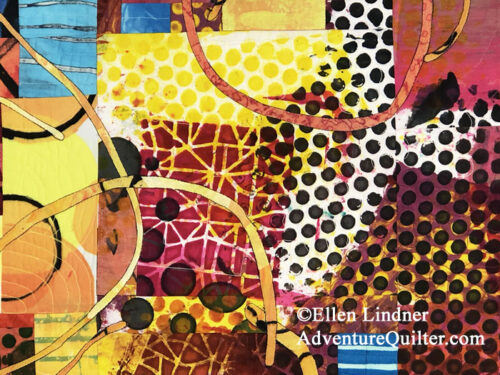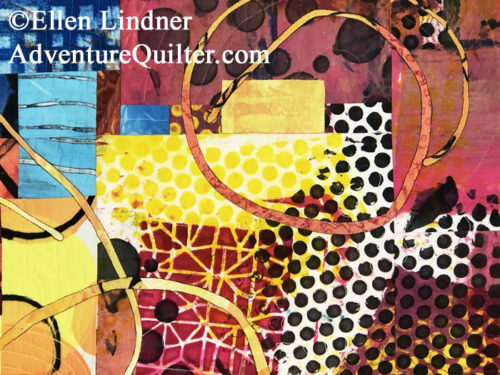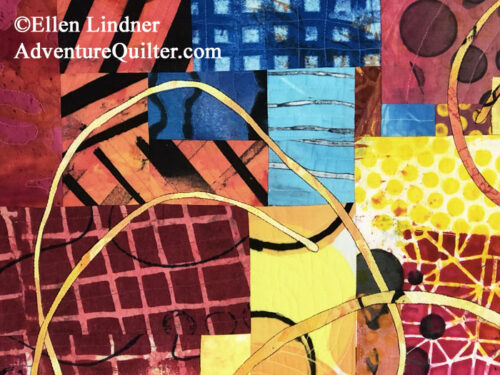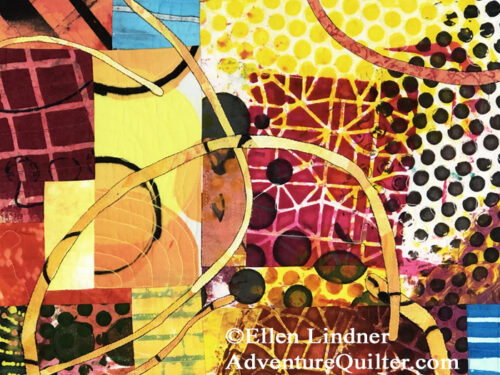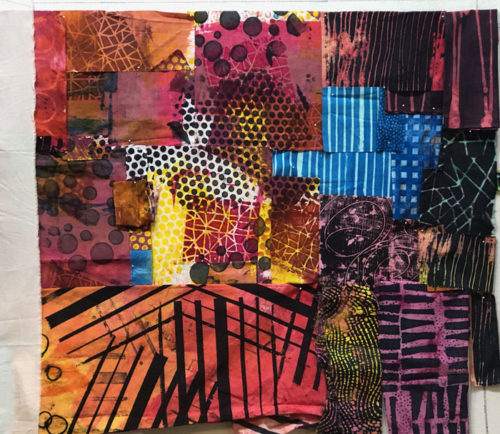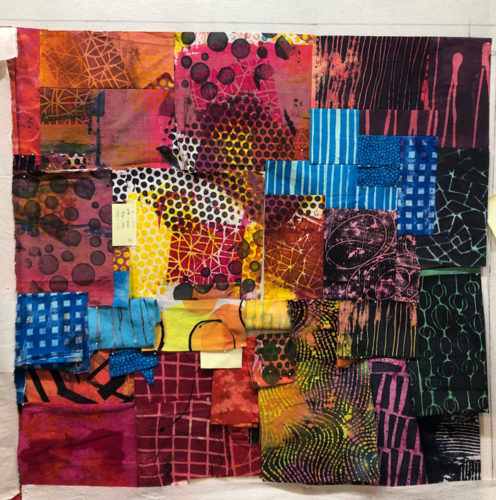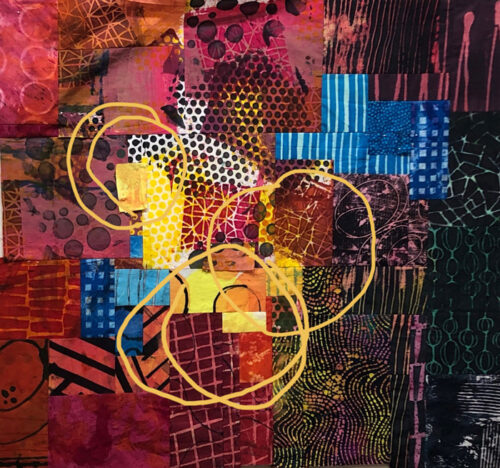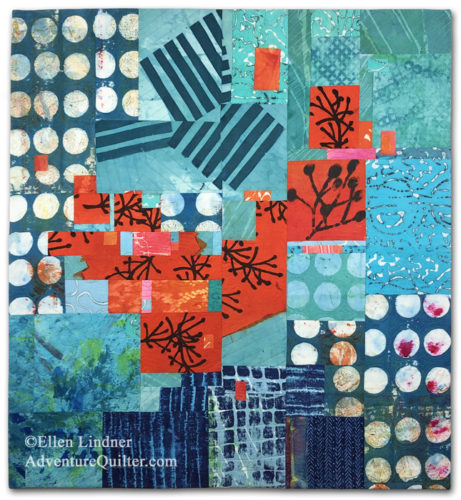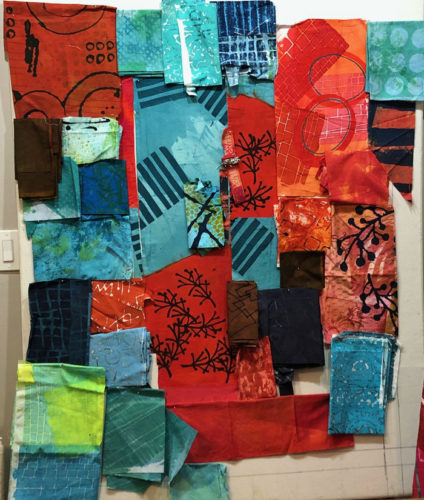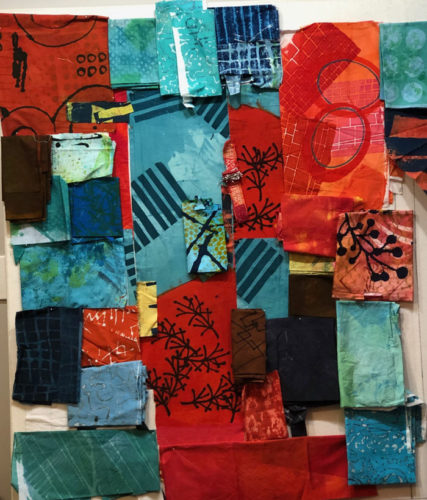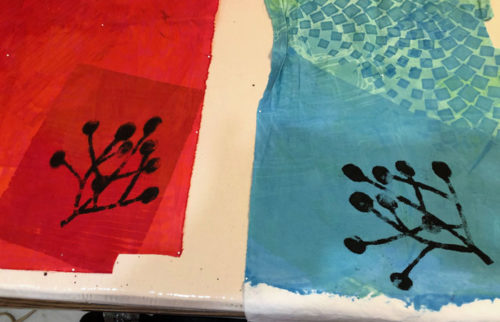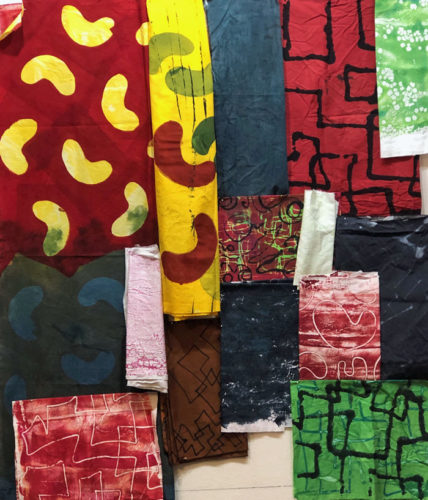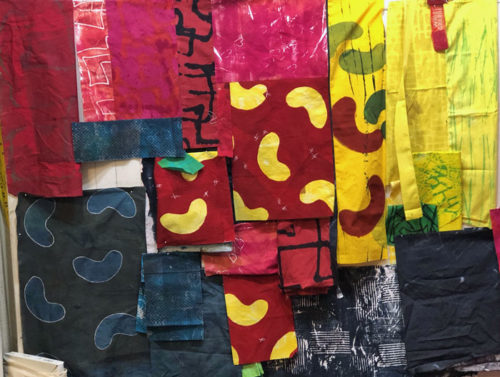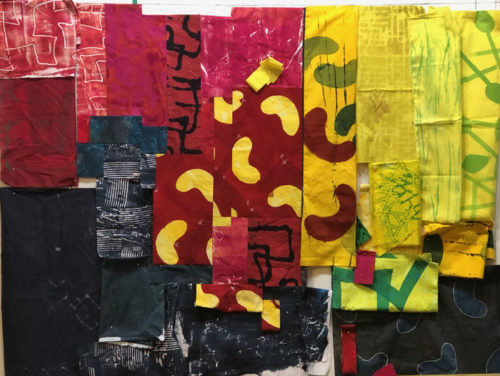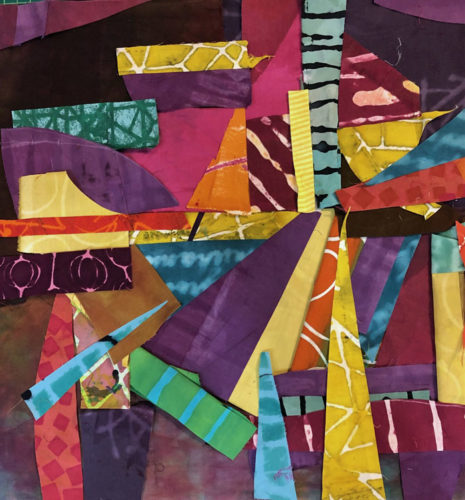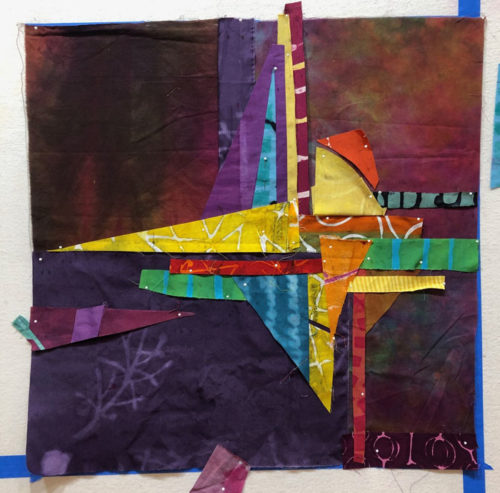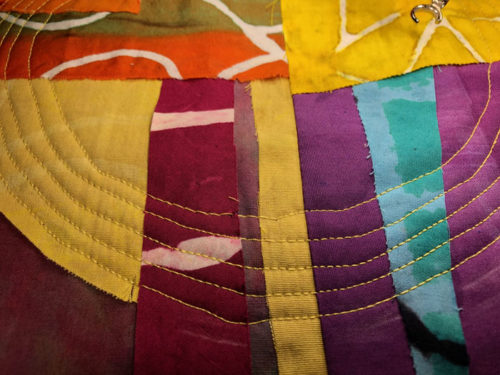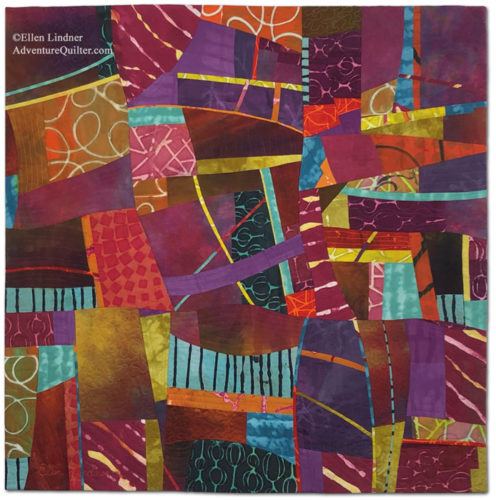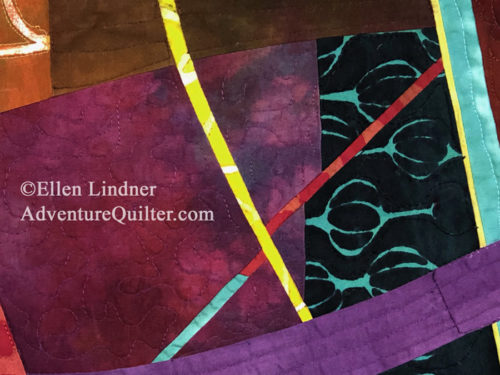I’ve been working on a new quilt, using fabrics I dye-printed during my last dying session. As you can see, I made them to go together.
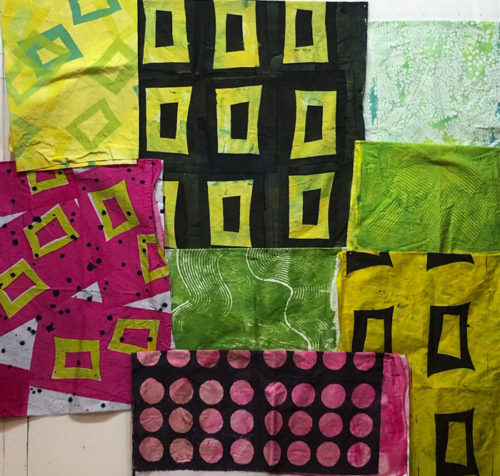
To get started, I pulled these out, along with every fabric I thought MIGHT go with them. As usual, this stage was a rather ugly mess. (I was toying with the idea of using some pure red bits along with the pink.)

That seemed like overkill. I removed some busy high-contrast fabrics, most of the red, and tried out a little blue-green.
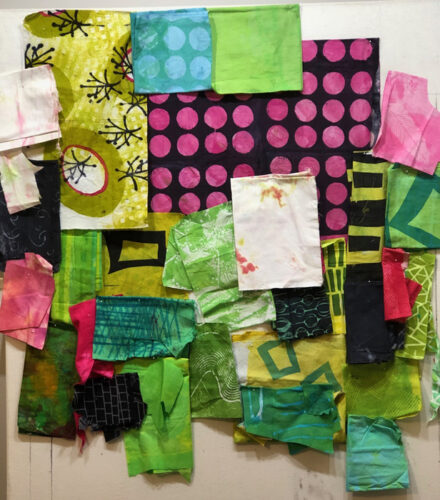
Much better. I was ready to move ahead.
There was a fabric combo in this collection that was really exciting me: the pink and black polka dots and the yellow-green print top left, with the little twiggy shapes. I liked the way the sharp little twigs contrasted with the round dots. Unfortunately, the photo above shows ALL the twiggy fabric that I had. I knew I would have to use it very purposefully and that it’s limited size would also dictate the overall size of the quilt.
Here’s the entire piece of twiggy fabric plus what I thought was an appropriate amount of the polka-dot. I quickly committed to the central composition and stitched two primary seams. Everything else is shown in audition stage and is only folded and pinned.
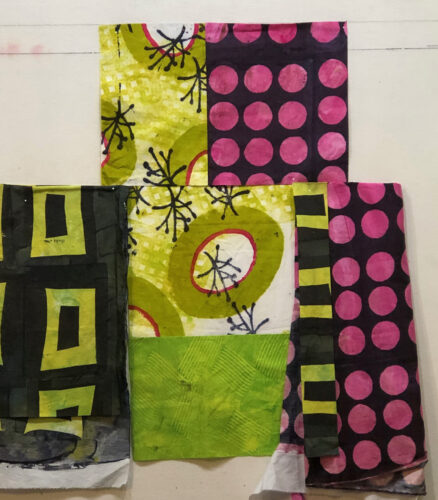
I really liked the vertical strip of black and yellow-green stripe just right of center (above.) I made it by carefully cutting a strip from the fabric with the large yellow-green rectangles. I was very happy with that result
Below, I added more fabric on the right. The black spacer between the stripe and the dots was needed as a calming note.
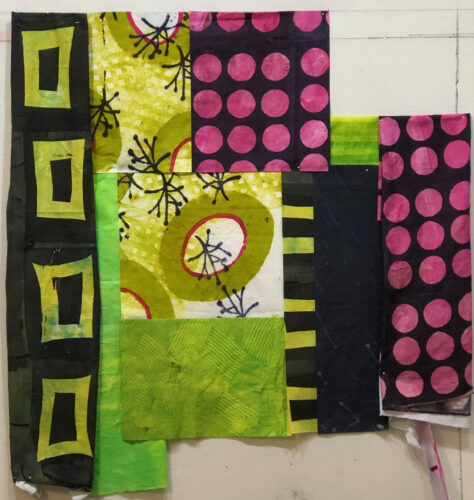
I wasn’t sure about the large rectangles on the left, shown above. They seemed to be sorta taking over. I removed them and concentrated on the right side for a bit. This corner combination seemed about right.
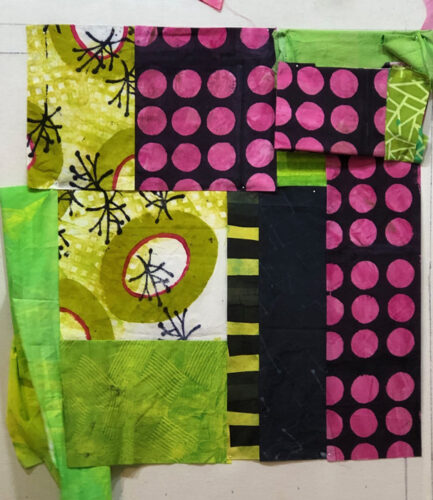
The left side was definitely going to need some attention. At this point it needed some weight (black) and some pink.
In the next post I’ll show you my progress.
Ellen Lindner


